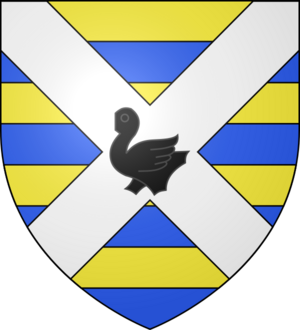Saint-Tricat facts for kids
Saint-Tricat is a small community, known as a commune, located in northern France. It is found in the Pas-de-Calais department, which is part of the Nord-Pas-de-Calais region. Think of a commune as a local town or village area, a department as a larger county, and a region as a bigger state or province.
Contents
What is Saint-Tricat?
Saint-Tricat is a quiet place in the countryside of northern France. It's a peaceful area where people live and work, often involved in farming or local businesses. Like many communes in France, it has its own local government that helps manage the community's daily life.
Where is Saint-Tricat Located?
Saint-Tricat is situated in the Pas-de-Calais department. This department is known for its history and its location near the English Channel. The Nord-Pas-de-Calais region, where Saint-Tricat is found, is one of the northernmost regions of France. It shares borders with Belgium and is close to the sea.
Understanding French Geography
France is divided into different levels of areas to help with its organization.
- A commune is the smallest local government area, like a town or village.
- A department is a larger area, similar to a county or shire in other countries.
- A region is the largest administrative area within France, similar to a state or province.
These divisions help the French government manage services like schools, roads, and local laws for all its citizens.
History of Saint-Tricat
While Saint-Tricat is a small commune, like many places in France, it has a long history. Its name and location suggest it has been part of the French landscape for many centuries. Over time, it has seen changes in farming methods and local life, adapting to the world around it.
The Pale of Calais Connection
Saint-Tricat was historically part of an area known as the Pale of Calais. This was a territory in France that was controlled by England for a long time, from the 14th century until the mid-16th century. This historical connection means that the area around Saint-Tricat has a unique past, influenced by both French and English history.
See also
 In Spanish: Saint-Tricat para niños
In Spanish: Saint-Tricat para niños


